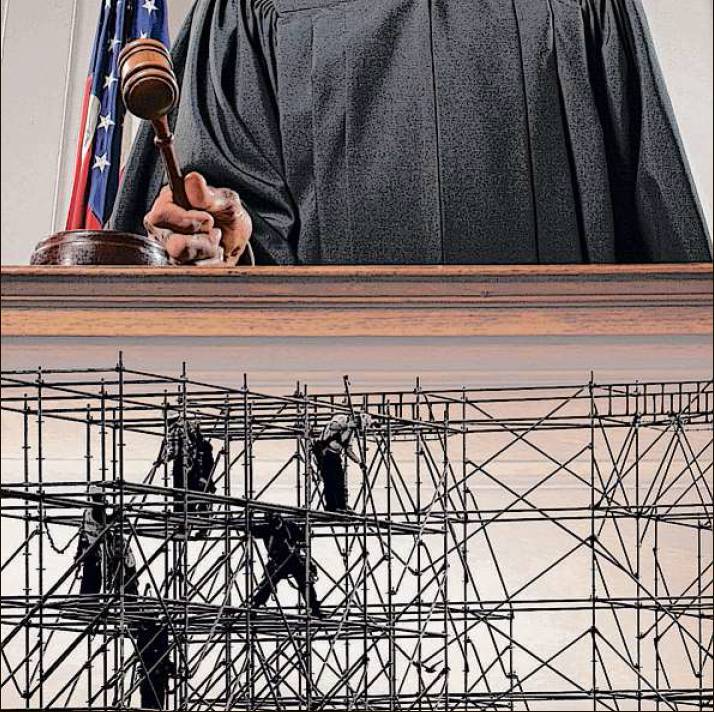Chief judge’s plan is out of order
By Barbara R. Kapnick and Mary Ann Brigantti
While we agree with the observation that several of our courts are overburdened and underresourced, especially for the poor and unrepresented, Chief Judge Janet DiFiore’s massive court restructuring plan does not in any way fix these problems or simplify the court structure.
This plan jeopardizes the independence of the judiciary and severely undercuts the voters’ right to select diverse individuals who are qualified and passionate about the substantive area of law for which they seek office. The chief judge’s proposal, rebuffed by the Legislature three years ago, would centralize power in the Office of Court Administration and empower her to assign judges without regard to geographic limitation or relevant experience.
While the chief judge argues her proposal would yield a more diverse judiciary, the facts do not bear that out. A 2020 survey by the Judicial Friends Association found percentages of elected diverse judges in the Supreme and Civil Courts in and around New York City were far higher than among appointed judges, whether appointed by OCA, the governor or the mayor. While representation in the judiciary of minorities and women upstate is lagging, the reality is that it is a reflection of the lower percentage of women and minority lawyers in those communities, and perhaps a lack of political will to ameliorate it.
It is telling that OCA did not consult with judges or the unionized courthouse staff in promulgating this rehashed plan. The disconnect with the realities of trial-level courts is reflected in the misunderstanding of how the proposed changes merely transform five courts into six divisions, leaving unchanged their distinct functions and operations.
The proposal would properly leave in place the many problem-solving courts created in recent decades to provide specialized judicial expertise. Those courts were created under existing administrative authority, demonstrating OCA’s ability to quickly pivot to respond to communities’ needs throughout the state.
OCA has recently focused on accumulating statistics, creating more courts, enhancing technology in the Supreme Court, and expanding court administration. During this same time, and notwithstanding COVID-19-linked backlogs in both Family Court and Housing Court, OCA failed to prepare and equip those courts to better serve litigants who depend on them to resolve critical issues in their lives.
User-friendly websites and standardized forms were not created or updated. E-filing was not expanded in Family Court. Additional court attorney referees and support magistrates — who primarily make custody and child support decisions — were not hired. Protocols were not implemented to ensure Family Court hearings were conducted on consecutive days until completed. Remote access sites were neither created nor adequately staffed. Court facilities were left to deteriorate.
For victims of domestic violence who seek custody, support and/or matrimonial assistance, OCA also failed to establish, fund and support additional Integrated Domestic Violence Courts, expressly providing concurrent jurisdiction for individuals in need of those services.
The Equal Justice Report authored by former U.S. Homeland Security Secretary Jeh Johnson found a two-tiered system of justice. The report did not fault the constitutional structure of New York courts.
The deplorable condition of the Family Courts, Housing Courts and Criminal Courts is a direct result of the failure of OCA to adequately fund, staff, prioritize and manage those courts. If OCA were truly committed to helping the citizens who depend on our “overburdened and under-resourced courts,” why did OCA’s 2021-22 budget provide for a 9.7 percent decrease in Housing Court funding, a 1.5 percent increase in Family Court funding, and a 10.9 percent decrease in Assigned Counsel funding? That was one year after OCA’s Court Administration and General Support funding jumped 11.6 percent and the Trial Court Administration funding jumped 5 percent.
OCA does not need a complicated and costly constitutional overhaul, and the formidable legislative changes that would be required, to properly staff, fund and support its struggling courts. It also does not need a constitutional amendment to make temporary transfers of judges. OCA already has that power pursuant to 22 NYCRR 81.1(b)(4), but unlike the chief judge’s proposal, that power is temporary and does not diminish citizens’ voting rights.
We would encourage OCA to finally sit down with the judges and nonjudicial staff rather than attempting to create a mirage of reform. The centralization of appointive power in OCA and the chief judge undercuts the role of elected judges, diminishes the power of the electorate, and does little to achieve diversity in the judiciary or provide equal access to justice.
▶ Barbara R. Kapnick is an Associate Justice of the Appellate Division, First Department, and President of the Association of Justices of the Supreme Court of the State of New York, and Mary Ann Brigantti, Supreme Court Justice, Appellate Term, First Department, and President of the Supreme Court Justices Association of the City of New York.
